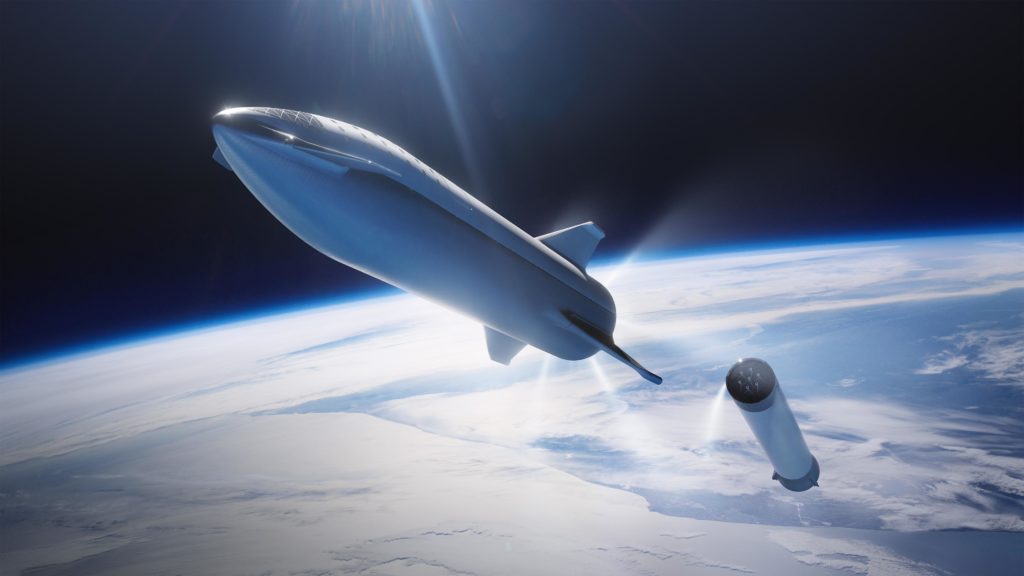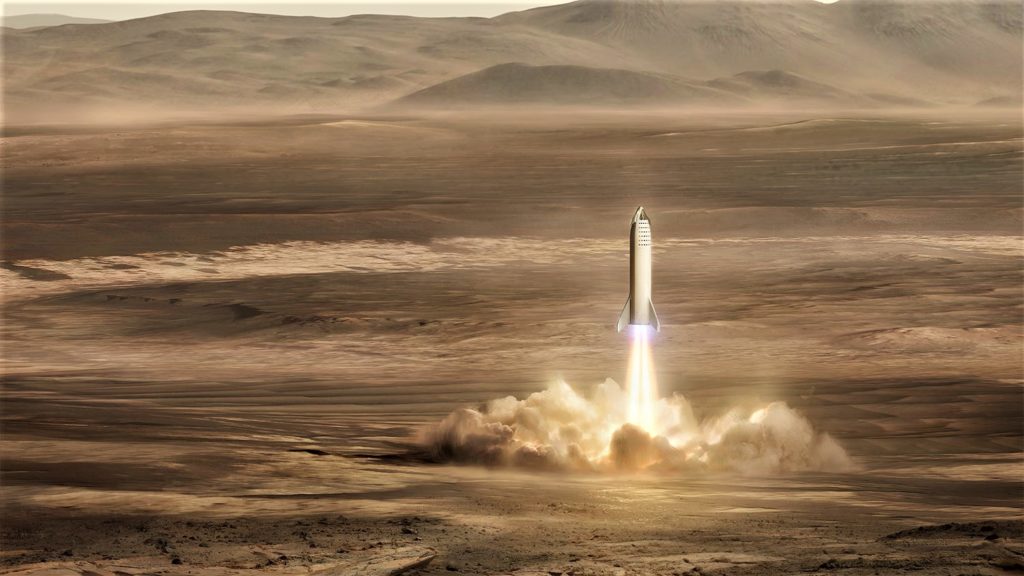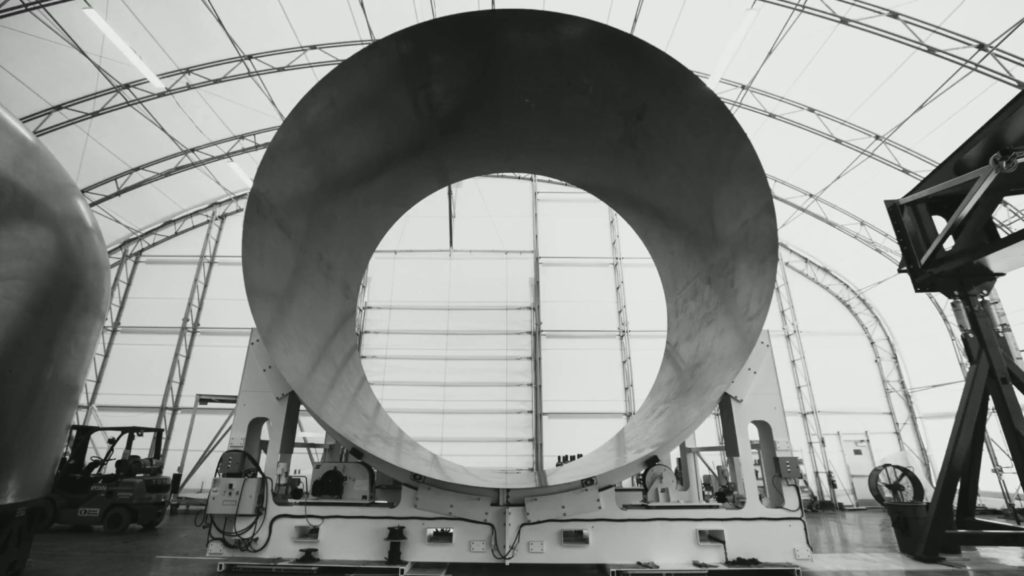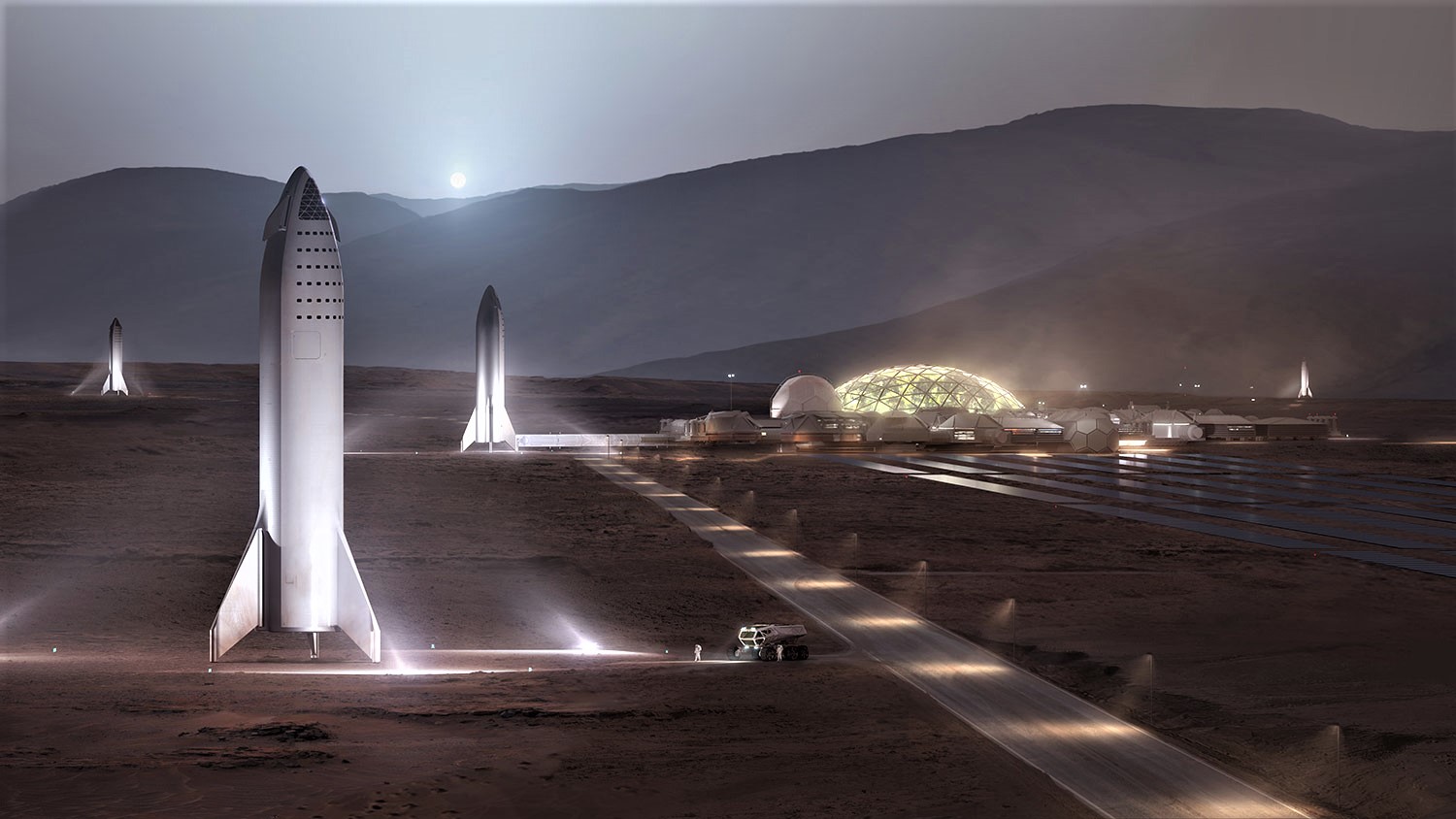

News
SpaceX CEO Elon Musk lays out ambitious deadline for BFR-built Mars Base Alpha
SpaceX CEO Elon Musk has announced what may be the company’s most ambitious deadline yet, stating that he believes a full ‘Mars Base Alpha’ – a preliminary city on the Red Planet – could be completed as soon as 2028.
Mars Base Alpha pic.twitter.com/O1llQp8rFY
— Elon Musk (@elonmusk) September 21, 2018
Probably 2028 for a base to be built
— Elon Musk (@elonmusk) September 21, 2018
In essence, Musk has implied that SpaceX could go from completing the first prototype spaceship segments to a full-fledged Martian city in a decade, a goal that might be even more ambitious than President John F. Kennedy urging – in 1961 – the U.S. to commit itself to landing humans on the Moon “before this decade is out”. In fact, the comparison becomes increasingly apt after examining the finer details of both major proclamations.
For Kennedy’s famous May 1961 speech, NASA had launched its first astronaut ever – and only on a suborbital mission – less than three weeks prior, and would not place an astronaut in orbit for another nine months after that. This was perhaps the boldest aspect of Kennedy’s announcement – he wanted NASA to go from a tiny, suborbital rocket (Mercury-Redstone) to Saturn V – a rocket that could literally place five fully-loaded Redstone rockets into low Earth orbit in a single launch – in well under a decade.
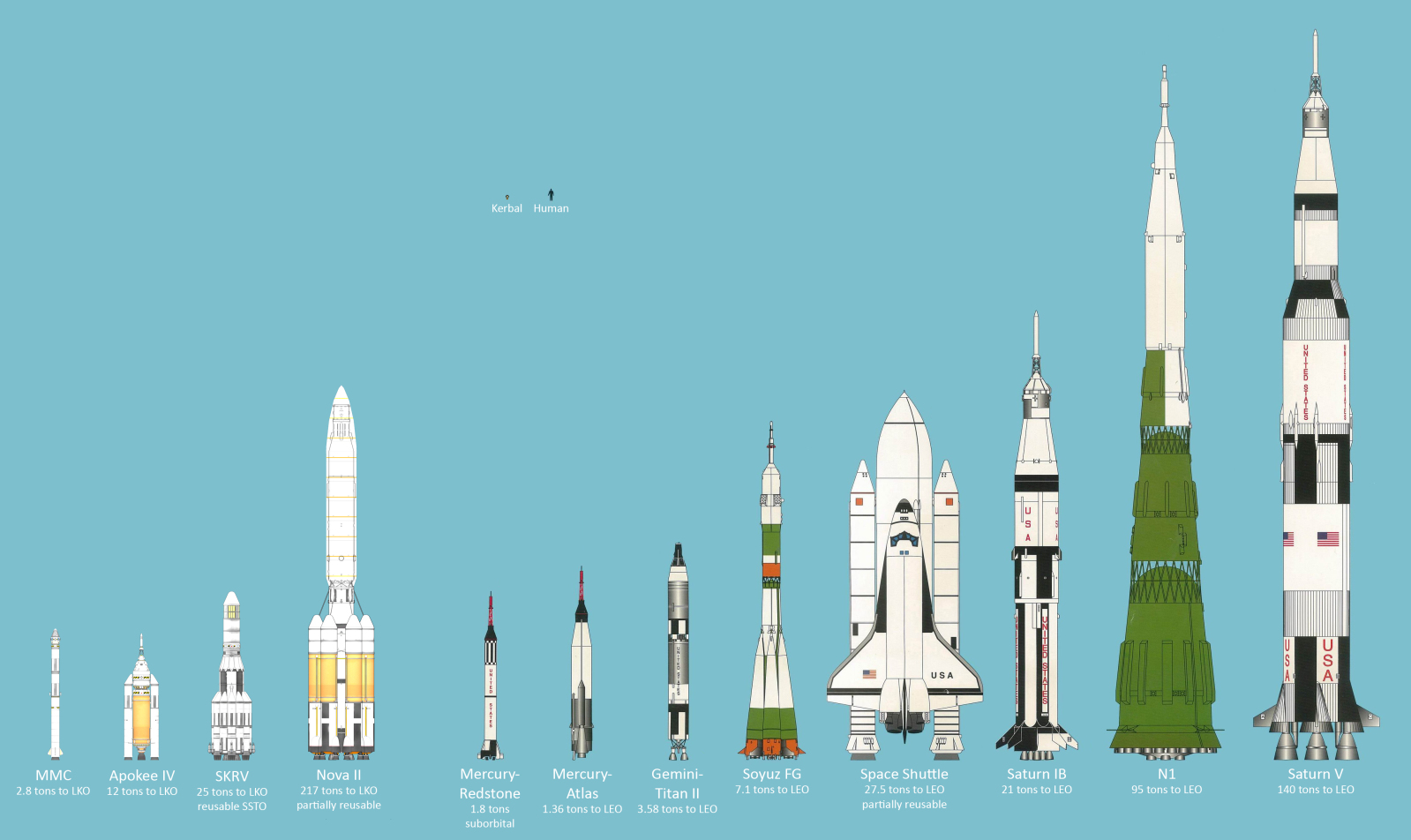
Examining NASA in the early 1960s, the challenges ahead of SpaceX may be quite forgiving in comparison. While NASA had less than three years of experience launching extremely small launch vehicles and placing even smaller (but still pioneering) satellites and space probes into orbit prior to May 1961, SpaceX has a full 60 successful launches of its massive Falcon 9 and Heavy rockets to bastion its expertise, as well more than 30 successful rocket landings and 15 reuses of a number of those recovered Falcon 9 boosters.
In terms of capability and size gaps, SpaceX’s journey from a Falcon 9 or Heavy-sized rocket to BFR is more akin to the Saturn I and IB rockets that preceded Saturn V, the latter of which is shown above. It’s still going to be a massive challenge for the rocket company, particularly with respect to the move from aluminum-lithium propellant tanks to all carbon-composite tanks and structures, but SpaceX arguably has it easy compared to NASA.
- BFR’s booster and spaceship separate a few minutes after launch. (SpaceX)
- An updated spaceship lands on Mars. (SpaceX)
- SpaceX has already completed the first of many carbon-composite sections of its prototype spaceship. (SpaceX)
- Yusaku Maezawa stands on the first BFR composite tank/fuselage section prior to his Sept. 17 announcement. (Yusaku Maezawa)
Massive hurdles still remain for the establishment of any successful Mars base, especially one just a decade from now, with essentially every major component of such a base being a major unknown that needs to be analyzed and solved sometime between now and then. Just as Musk noted in his September 17th BFR update and lunar tourism announcement, he tends to construct schedules from a perspective of everything going right, reasonable in the sense that ambitious targets breed ambitious achievements.
A large Mars Base Alpha with 4+ BFR spaceships landed on the Martian surface by 2028 is undoubtedly entirely dependent upon every conceivable aspect of BFR development going flawlessly over the next decade, an extraordinarily implausible outcome. The need to wait for optimal orbital alignments between Mars and Earth also means that even a few-month-slip could delay Mars launches by nearly two years.
For prompt updates, on-the-ground perspectives, and unique glimpses of SpaceX’s rocket recovery fleet check out our brand new LaunchPad and LandingZone newsletters!

Elon Musk
Elon Musk’s X will start using a Tesla-like software update strategy
The initiative seems designed to accelerate updates to the social media platform, while maintaining maximum transparency.

Elon Musk’s social media platform X will adopt a Tesla-esque approach to software updates for its algorithm.
The initiative seems designed to accelerate updates to the social media platform, while maintaining maximum transparency.
X’s updates to its updates
As per Musk in a post on X, the social media company will be making a new algorithm to determine what organic and advertising posts are recommended to users. These updates would then be repeated every four weeks.
“We will make the new 𝕏 algorithm, including all code used to determine what organic and advertising posts are recommended to users, open source in 7 days. This will be repeated every 4 weeks, with comprehensive developer notes, to help you understand what changed,” Musk wrote in his post.
The initiative somewhat mirrors Tesla’s over-the-air update model, where vehicle software is regularly refined and pushed to users with detailed release notes. This should allow users to better understand the details of X’s every update and foster a healthy feedback loop for the social media platform.
xAI and X
X, formerly Twitter, has been acquired by Elon Musk’s artificial intelligence startup, xAI last year. Since then, xAI has seen a rapid rise in valuation. Following the company’s the company’s upsized $20 billion Series E funding round, estimates now suggest that xAI is worth tens about $230 to $235 billion. That’s several times larger than Tesla when Elon Musk received his controversial 2018 CEO Performance Award.
As per xAI, the Series E funding round attracted a diverse group of investors, including Valor Equity Partners, Stepstone Group, Fidelity Management & Research Company, Qatar Investment Authority, MGX, and Baron Capital Group, among others. Strategic partners NVIDIA and Cisco Investments also continued support for building the world’s largest GPU clusters.
News
Tesla FSD Supervised wins MotorTrend’s Best Driver Assistance Award
The decision marks a notable reversal for the publication from prior years, with judges citing major real-world improvements that pushed Tesla’s latest FSD software ahead of every competing ADAS system.

Tesla’s Full Self-Driving (Supervised) system has been named the best driver-assistance technology on the market, earning top honors at the 2026 MotorTrend Best Tech Awards.
The decision marks a notable reversal for the publication from prior years, with judges citing major real-world improvements that pushed Tesla’s latest FSD software ahead of every competing ADAS system. And it wasn’t even close.
MotorTrend reverses course
MotorTrend awarded Tesla FSD (Supervised) its 2026 Best Tech Driver Assistance title after extensive testing of the latest v14 software. The publication acknowledged that it had previously criticized earlier versions of FSD for erratic behavior and near-miss incidents, ultimately favoring rivals such as GM’s Super Cruise in earlier evaluations.
According to MotorTrend, the newest iteration of FSD resolved many of those shortcomings. Testers said v14 showed far smoother behavior in complex urban scenarios, including unprotected left turns, traffic circles, emergency vehicles, and dense city streets. While the system still requires constant driver supervision, judges concluded that no other advanced driver-assistance system currently matches its breadth of capability.
Unlike rival systems that rely on combinations of cameras, radar, lidar, and mapped highways, Tesla’s FSD operates using a camera-only approach and is capable of driving on city streets, rural roads, and freeways. MotorTrend stated that pure utility, the ability to handle nearly all road types, ultimately separated FSD from competitors like Ford BlueCruise, GM Super Cruise, and BMW’s Highway Assistant.
High cost and high capability
MotorTrend also addressed FSD’s pricing, which remains significantly higher than rival systems. Tesla currently charges $8,000 for a one-time purchase or $99 per month for a subscription, compared with far lower upfront and subscription costs from other automakers. The publication noted that the premium is justified given FSD’s unmatched scope and continuous software evolution.
Safety remained a central focus of the evaluation. While testers reported collision-free operation over thousands of miles, they noted ongoing concerns around FSD’s configurable driving modes, including options that allow aggressive driving and speeds beyond posted limits. MotorTrend emphasized that, like all Level 2 systems, FSD still depends on a fully attentive human driver at all times.
Despite those caveats, the publication concluded that Tesla’s rapid software progress fundamentally reshaped the competitive landscape. For drivers seeking the most capable hands-on driver-assistance system available today, MotorTrend concluded Tesla FSD (Supervised) now stands alone at the top.
News
Elon Musk’s Grokipedia surges to 5.6M articles, almost 79% of English Wikipedia
The explosive growth marks a major milestone for the AI-powered online encyclopedia, which was launched by Elon Musk’s xAI just months ago.

Elon Musk’s Grokipedia has grown to an impressive 5,615,201 articles as of today, closing in on 79% of the English Wikipedia’s current total of 7,119,376 articles.
The explosive growth marks a major milestone for the AI-powered online encyclopedia, which was launched by Elon Musk’s xAI just months ago. Needless to say, it would only be a matter of time before Grokipedia exceeds English Wikipedia in sheer volume.
Grokipedia’s rapid growth
xAI’s vision for Grokipedia emphasizes neutrality, while Grok’s reasoning capabilities allow for fast drafting and fact-checking. When Elon Musk announced the initiative in late September 2025, he noted that Grokipedia would be an improvement to Wikipedia because it would be designed to avoid bias.
At the time, Musk noted that Grokipedia “is a necessary step towards the xAI goal of understanding the Universe.”
Grokipedia was launched in late October, and while xAI was careful to list it only as Version 0.1 at the time, the online encyclopedia immediately earned praise. Wikipedia co-founder Larry Sanger highlighted the project’s innovative approach, noting how it leverages AI to fill knowledge gaps and enable rapid updates. Netizens also observed how Grokipedia tends to present articles in a more objective manner compared to Wikipedia, which is edited by humans.
Elon Musk’s ambitious plans
With 5,615,201 total articles, Grokipedia has now grown to almost 79% of English Wikipedia’s article base. This is incredibly quick, though Grokipedia remains text-only for now. xAI, for its part, has now updated the online encyclopedia’s iteration to v0.2.
Elon Musk has shared bold ideas for Grokipedia, including sending a record of the entire knowledge base to space as part of xAI’s mission to preserve and expand human understanding. At some point, Musk stated that Grokipedia will be renamed to Encyclopedia Galactica, and it will be sent to the cosmos.
“When Grokipedia is good enough (long way to go), we will change the name to Encyclopedia Galactica. It will be an open source distillation of all knowledge, including audio, images and video. Join xAI to help build the sci-fi version of the Library of Alexandria!” Musk wrote, adding in a later post that “Copies will be etched in stone and sent to the Moon, Mars and beyond. This time, it will not be lost.”
